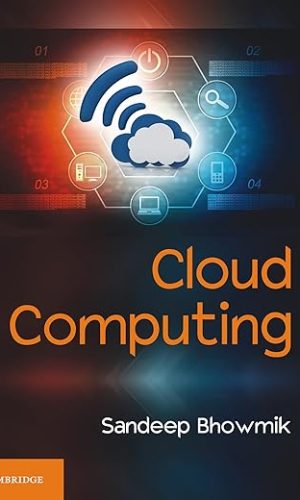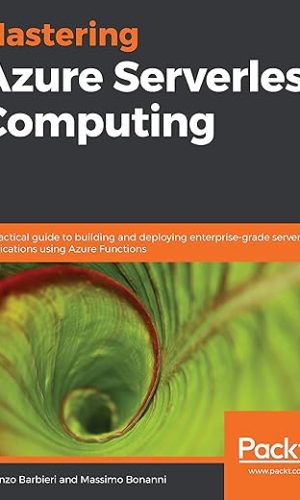Networking
-
Cloud Computing
Written in a tutorial style, this comprehensive guide follows a structured approach explaining cloud techniques, models and platforms. Popular cloud services such as Amazon, Google and Microsoft Azure are explained in the text. The security risks and challenges of cloud computing are discussed in detail with useful examples. Emerging trends including mobile cloud computing and internet of things are discussed in the book for the benefit of the readers. Numerous review questions, multiple choice exercises and case studies facilitate enhanced understanding. This textbook is ideal for undergraduate and graduate students of computer science engineering, and information technology.Read more
£36.70Cloud Computing
£36.70 -
Mastering Azure Serverless Computing: A practical guide to building and deploying enterprise-grade serverless applications using Azure Functions
Become an expert in implementing Azure Functions to work seamlessly with your serverless applications
Key Features
- Develop scalable, robust multi-tier apps without worrying about infrastructure needs
- Deploy and manage cost-effective and highly available serverless apps using Azure Functions
- Accelerate enterprise-level application development by seamlessly integrating different cloud services with Azure Functions
Book Description
Application development has evolved from traditional monolithic app development to using serverless options and microservices. This book is designed to guide you through using Microsoft’s Azure Functions to process data, integrate systems, and build simple APIs and microservices.
You will discover how to apply serverless computing to speed up deployment and reduce downtime. You’ll also explore Azure Functions, including its core functionalities and essential tools, along with understanding how to debug and even customize Azure Functions. In addition to this, the book will take you through how you can effectively implement DevOps and automation in your working environment. Toward the concluding chapters, you’ll cover some quick tips, troubleshooting techniques, and real-world serverless use cases that will help you make the most of serverless computing.
By the end of this book, you will have gained the skills you need to develop and deliver cost-effective Azure serverless solutions.
What you will learn
- Create and deploy advanced Azure Functions
- Learn to extend the runtime of Azure Functions
- Orchestrate your logic through code or a visual workflow
- Add caching, security, routing, and filtering to your APIs
- Use serverless technologies in real-world scenarios
- Understand how to apply DevOps and automation to your working environment
Who this book is for
This book is designed for cloud administrators, architects, and developers interested in building scalable systems and deploying serverless applications with Azure Functions. Prior knowledge of core Microsoft Azure services and Azure Functions is necessary to understand the topics covered in this book.
Table of Contents
- Developing and Running Azure Functions
- Customizing Your Azure Functions
- Programming Languages Supported in Azure Functions
- Deploying and Configuring Your Azure Functions
- Leverage the Power of DevOps with Azure Functions
- Testing and Monitoring
- Serverless and Containers
- Orchestration as Code – Durable Functions
- Orchestration as Design – Logic Apps
- Empowering Your Serverless API with API Management
- High-Scale Serverless Event Processing with Event Grid
- Best Practices and Use Cases for Azure Serverless Computing
Read more
£24.70 -
The Cloud Computing Book: The Future of Computing Explained
This latest textbook from bestselling author, Douglas E. Comer, is a class-tested book providing a comprehensive introduction to cloud computing. Focusing on concepts and principles, rather than commercial offerings by cloud providers and vendors, The Cloud Computing Book: The Future of Computing Explained gives readers a complete picture of the advantages and growth of cloud computing, cloud infrastructure, virtualization, automation and orchestration, and cloud-native software design.
The book explains real and virtual data center facilities, including computation (e.g., servers, hypervisors, Virtual Machines, and containers), networks (e.g., leaf-spine architecture, VLANs, and VxLAN), and storage mechanisms (e.g., SAN, NAS, and object storage). Chapters on automation and orchestration cover the conceptual organization of systems that automate software deployment and scaling. Chapters on cloud-native software cover parallelism, microservices, MapReduce, controller-based designs, and serverless computing. Although it focuses on concepts and principles, the book uses popular technologies in examples, including Docker containers and Kubernetes. Final chapters explain security in a cloud environment and the use of models to help control the complexity involved in designing software for the cloud.
The text is suitable for a one-semester course for software engineers who want to understand cloud, and for IT managers moving an organization’s computing to the cloud.
Read more
£38.50



